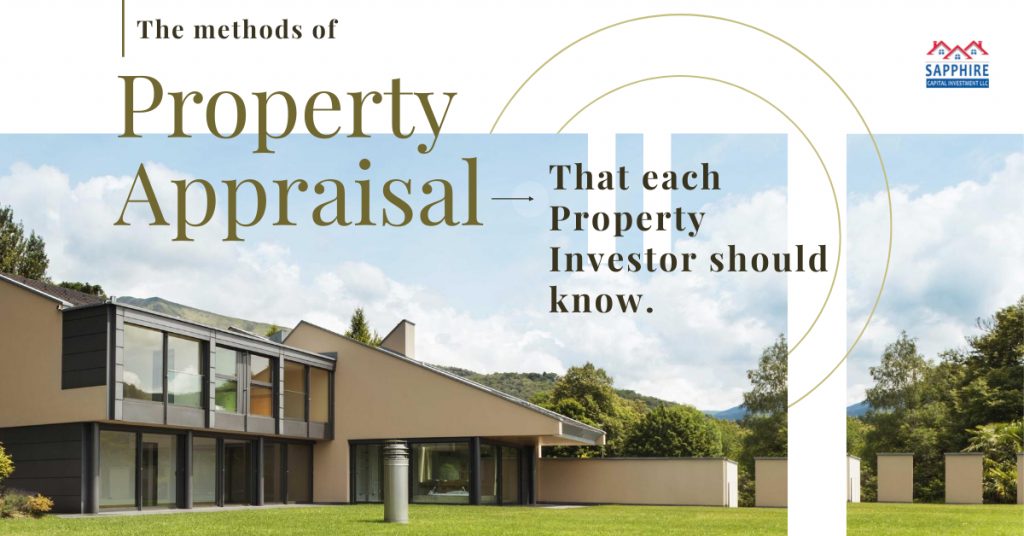The methods of property appraisal that each property investor should know.
As a potential or experienced property investor, one of the pertinent issues on your mind is how much you are willing to part with to acquire property. This is where property appraisal or property valuation comes into play. In this article, the team from Sapphire Capital Investment highlights the three main appraisal methods that real estate investors should know.
What is a property appraisal?
This is the process where the value of a property is determined or the price that real estate should exchange hands. Due to the intricacies that involve the calculations, appraisal of the property is typically carried out by professionals who have been trained and certified. The American Society of Appraisers is the professional body charged with that responsibility.
Before we get into the different methods, investors should know that the value of real estate is not equal to the price. Let’s take an example of a distressed property. The prices at which it is sold will be far below market value due to the encumbrances on the property.

Importance of property appraisal
Property investors will mostly come into contact with appraisals when they need to get a mortgage from a lender. The objective of the mortgage lender is two-pronged; prevent the buyer from paying more than the market provides for, and also protect their interests should the borrower default on the loan.
Property Appraisal methods
There are three common approaches to property appraisal:
- Income Approach
This method of appraisal is mostly used for rental properties and commercial real estate. The rationale here is to calculate the present value of the property from the accruable rental income. An appraiser will calculate the net income (gross rental income minus all expenses) and divide it by the capitalization rate.
- Market Approach
Also known as the sales comparison method, this approach utilizes market information of recent sales of comparable properties in the neighborhood. It is considered one of the surest ways of calculating the value of a property as the sales are a reflection of the forces of supply and demand.
However, not all recent sales of similar properties are ideal for the calculation of the subject property’s value. The comparables might have or not have similar characteristics e.g. master ensuite, the number of bedrooms, a swimming pool, lot size, or built-up area. Therefore, adjustments must be made to the comparables to account for any differences.
Proper adjustments will allow the expert to arrive at the value of the property.
- Cost Approach
The cost approach is a sum of two elements: the cost of the land and the possible cost incurred by the owner in replacing the development on the land. The cost of the land will make use of the sales comparison mentioned above. As for the replacement of the development, the appraiser must consider the effect of depreciation and obsolescence.
While there are several methods in calculating replacement costs, the most common method is to use square foot costing multiplied by the built-up area.







